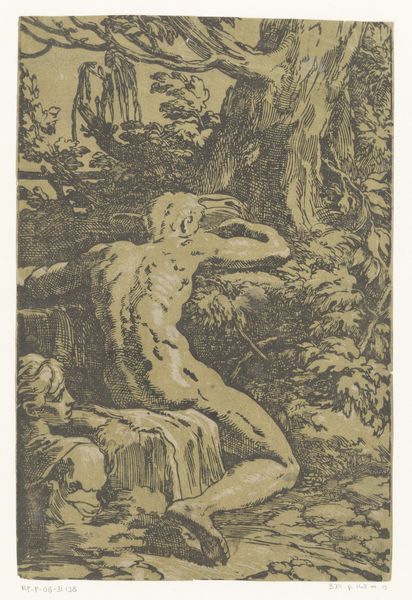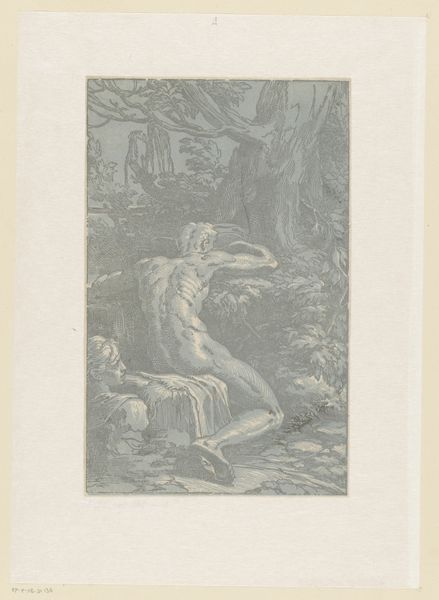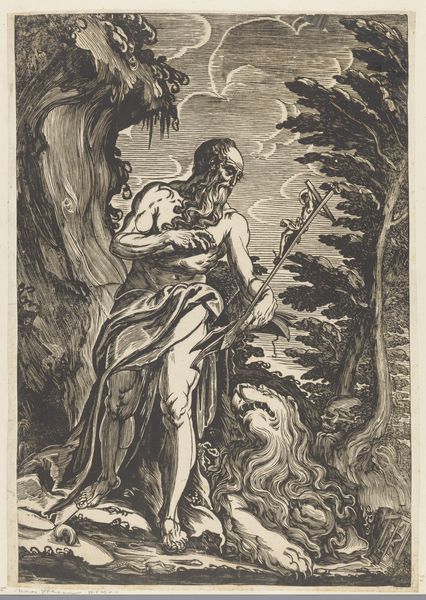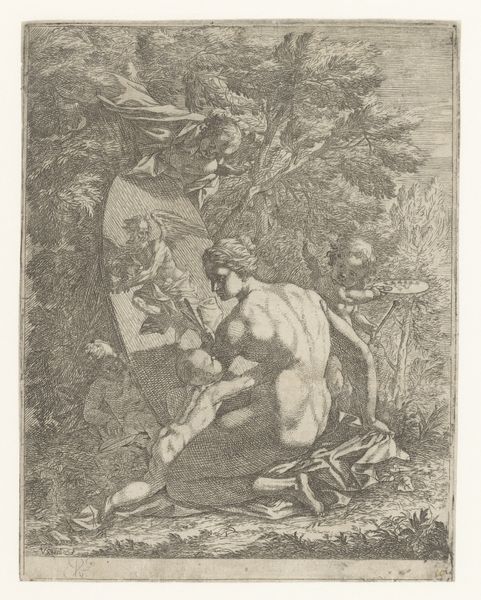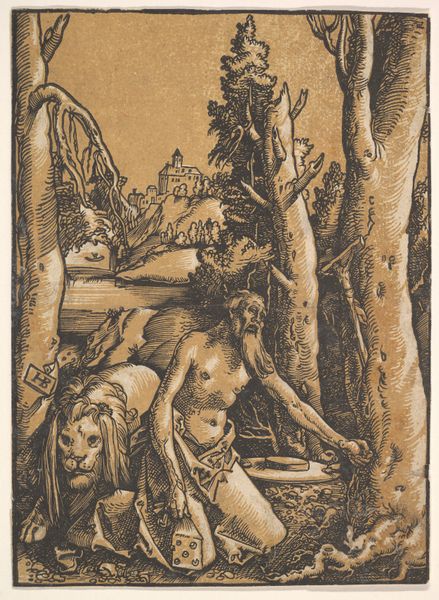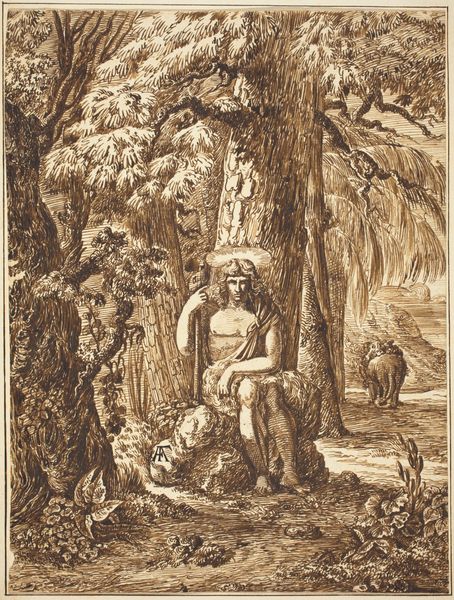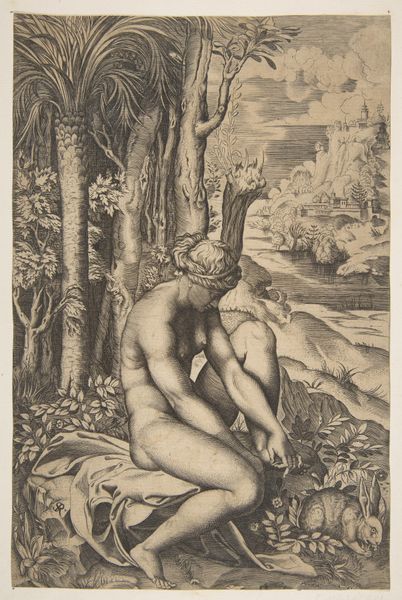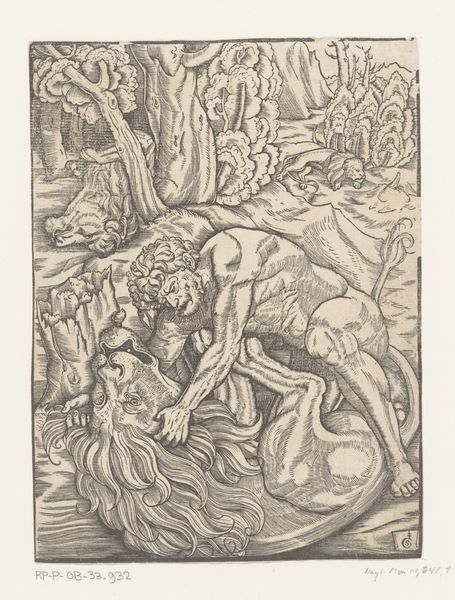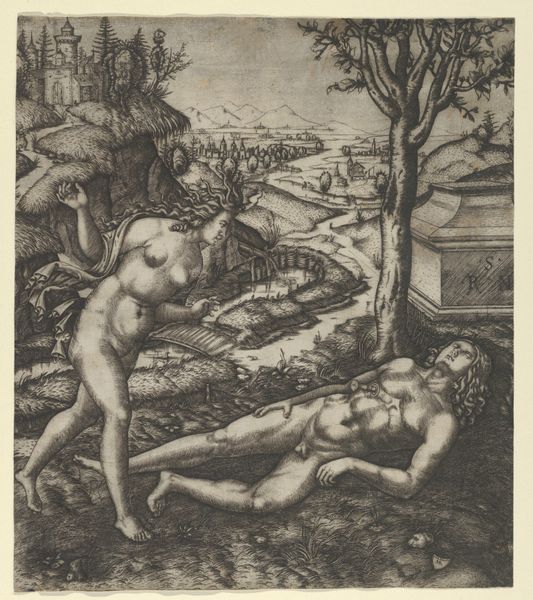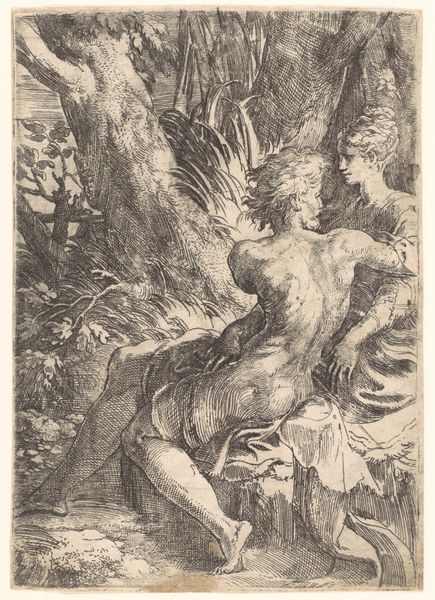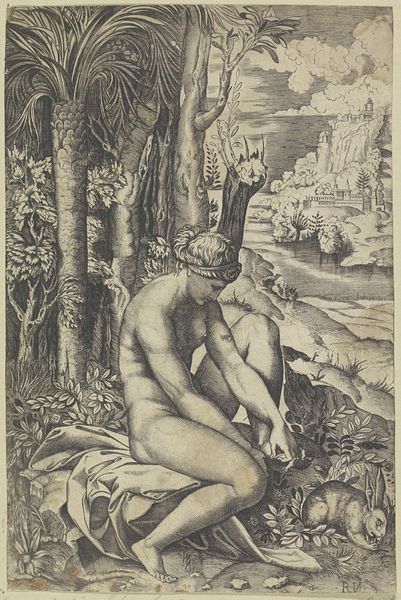
engraving
#
landscape
#
figuration
#
italian-renaissance
#
nude
#
engraving
Dimensions: height 286 mm, width 180 mm
Copyright: Rijks Museum: Open Domain
Antonio da Trento made this print – titled “Naked Man in a Landscape” – in Italy, sometime between 1520 and 1550. The classical form of the man’s body alludes to a rich cultural past, but it also exemplifies the Italian Renaissance’s renewed interest in classical antiquity, with its emphasis on humanism and the natural world. The politics of imagery in 16th century Italy were dominated by the Catholic Church, which commissioned many artworks. Religious themes were a key tool for communicating doctrine. The male nude, however, presented a challenge to the Church’s message. It was a contested subject, associated with paganism, and potentially, with the celebration of sensual pleasure. Was this image of the male nude a celebration of idealized beauty, or something more subversive? As art historians, we can use a variety of resources – historical texts, letters, and other visual materials – to better understand the original context of this image and its reception by contemporaries.
Comments
No comments
Be the first to comment and join the conversation on the ultimate creative platform.
